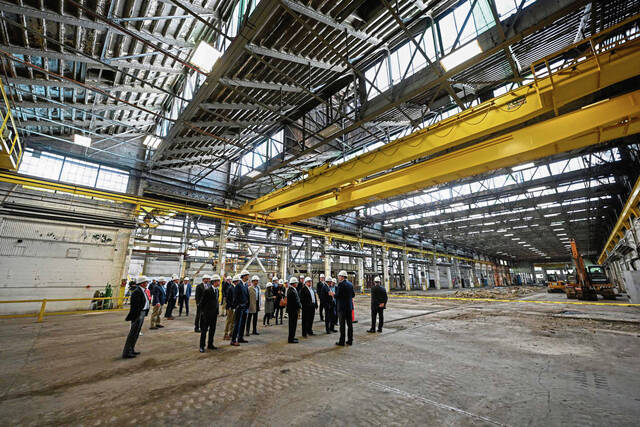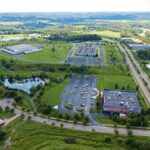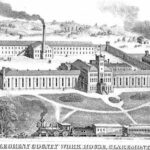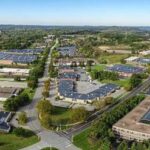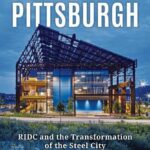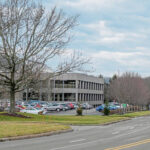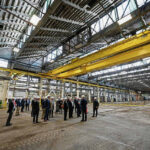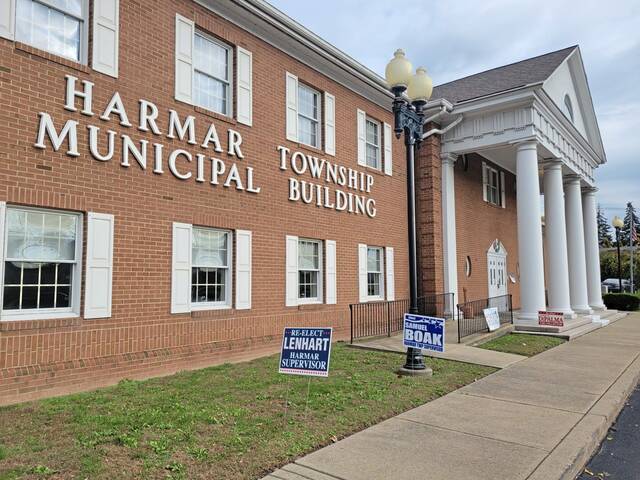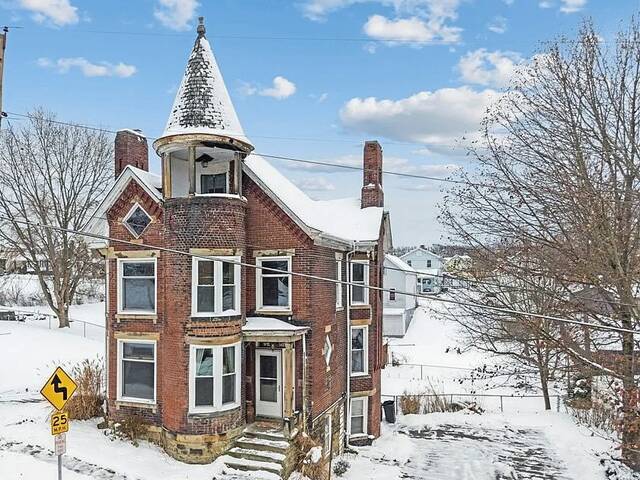The Regional Industrial Development Corporation is marking its 70th year of helping guide southwest Pennsylvania’s turbulent economic journey spurred by the steel industry collapse.
Plum native Jeff Fraser tells the company’s tale in a newly released book, “Rebuilding Pittsburgh: RIDC and the Transformation of the Steel City.” It details RIDC’s efforts post-WWII to revitalize abandoned steel mills and other dilapidated properties into thriving business and technology parks.
“Very few regions have gone through what Pittsburgh has gone through,” said Fraser, a 1971 Plum graduate. The retired Pittsburgh Today writer now lives in Penn Hills.
“The collapse of the steel industry was so incredibly devastating,” Fraser said. “Unemployment hit 18%. In Beaver County, it was 28% – greater than the peak in the Great Depression.
“So many people left. The area was devastated.”
Enter RIDC, a nonprofit created to advocate for economic development and community stimulus through job creation. It was established in 1955 after corporate, government and labor leaders supported a central agency help spur the region into a metropolitan hub.
Today, RIDC has 15 properties in its portfolio that support more than 8,500 jobs. Facilities sit on 7.8 million square-feet of property, which resulted in more than $3.3 million in real estate taxes to local communities last year.
Parcels are located in O’Hara, New Kensington, Freeport and Lawrenceville, among others.
Some key properties include:
• Keystone Commons, the former Westinghouse Electric Corporation’s East Pittsburgh/Turtle Creek complex. RIDC rehabbed several of the original buildings which now house more than 40 companies and employ about 1,100 people.
• Mill 19, the Hazelwood Green site once owned by J&L Steel Hazelwood Works and LTV Steel. Designed as a home for robotics and innovation, occupants today include the Advanced Robotics for Manufacturing Institute and Manufacturing Futures Initiative.
• RIDC Westmoreland, the former 2.8 million square-foot Sony Corp. plant now occupied by Siemens Energy, Intervala, City Brewery and Westmoreland Community College.
• Armstrong Innovation Park, former Northpointe Industrial Park, which saw a partnership with Armstrong County Industrial Development Council prep 925-acres of pad-ready parcels for commercial, industrial, and residential uses.
The company’s initial development in O’Hara was among the first planned industrial parks in the country, Fraser said.
Launched in 1964, RIDC purchased a 700-acre farm that housed the Allegheny County Workhouse and Inebriate Asylum, a stone fortress where prisoners were jailed for oddities like “keeping a bawdy house,” or “being a scold.”
RIDC couldn’t afford the total $1 million purchase so the county agreed to sell the farm piecemeal.
“The way they raised money was to recruit board members who were the corporate heads of the largest companies in Pittsburgh,” Fraser said. “They charged them a fee and used it for working capital.”
One of the earliest tenants was a University of Pittsburgh professor who wanted to launch a start-up.
“Pittsburgh was built to the specs of big industry,” Fraser said. “There weren’t a lot of clean, small parcels for light industry but RIDC was meant to stimulate small start-ups and O’Hara was successful.”
The O’Hara campus flourished to 3.75 million square-feet of property. It includes more than 130 companies and thousands of jobs in industrial, office, warehouse and light manufacturing. RIDC has sold many of the structures to private owners but still retains eight buildings there.
Tenants include those on the cutting-edge of medicine and technology, like KaliVir Immunotherapeutics, Inc., a leading cancer immunotherapy research firm and Aerotech, Inc., which produces automation and motion control products for aerospace, consumer electronics and medical device industries.
At the New Kensington Advanced Manufacturing Park — once home to Alcoa — efforts continue on an $81 million investment.
“That old Alcoa Works building was huge and falling apart,” Fraser said. “The City of New Kensington entered a period of gradual decline. City government and county economic development officials were working to reverse the caustic trends.
“The plant that gave the city its nickname was seen as an underused asset that could further the cause.”
It was acquired in October 2023 by RIDC and the Westmoreland County Industrial Development Corp.
Anchor tenant Re:Build Manufacturing comprises about 100,000 square feet of space in the facility, which spans New Ken and Arnold along the Allegheny River.
Earlier this month, a new partnership was announced.
New York-based Ecolectro, a hydrogen production manufacturer, partnered with Re:Build to produce next-generation electrolyzers.
Ecolectro Chief Commercial Officer Jon Gordon said New Kensington appears well positioned to support the expansion.
Fraser said the major takeaway in the book is to realize how hard the region, as a whole, fell after the industrial collapse.
“Recovery was not organic, not by chance,” he said.
How so many disparate factors — government, researchers and business people — set aside their differences to develop strategies for recovery is impressive, he said.
“The region demonstrated to the nation that when smart, rational people roll up their sleeves to solve a problem, it can work. And RIDC was right in the middle of that.
“Pittsburgh officials weren’t happy that a lot of businesses were moving out of city to the greener fields of O’Hara.”







